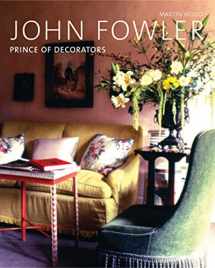
John Fowler: Prince of Decorators
Book details
Summary
Description
John Fowler was an interior decorator who set fashions and changed tastes. The English country house style, which he developed with Sibyl Colefax and Nancy Lancaster, his partners in the firm of Colefax & Fowler, has proved a source of continuing inspiration to decorators and home-owners on both sides of the Atlantic and indeed across the world. Today, a hundred years after his birth, his influence is almost as powerful as it was in the mid 20th century, when he was working on many of Britain's finest and most famous houses, including Uppark, Chequers and Buckingham Palace, as well as dozens of more modest projects. Fowler's style has been so widely imitated that it is easy to forget what an innovator he was. In the 1930s and 1940s his style was a breath of fresh country air, sweeping away heavy velvets and damasks in favour of crisp cotton chintzes, replacing glossy mahogany with painted Regency furnishings, elaborate porcelain and glitzy ormolu with modest pottery and painted tin. Even after the war, when he came to specialize in the decoration of architecturally important interiors, he continued to prefer 'humble elegance' and 'romantic disrepair' to pomposity.


We would LOVE it if you could help us and other readers by reviewing the book
Book review




